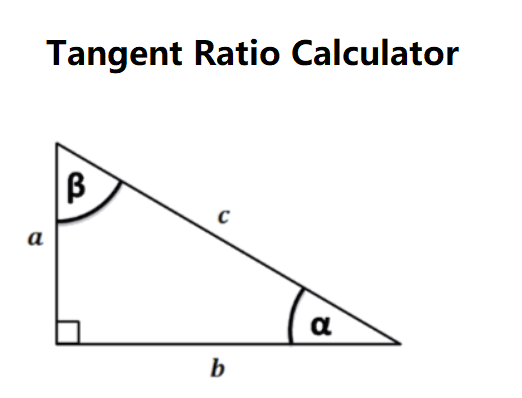 Home
Home
 Back
Back

Tangent is a trigonometric function that represents the ratio of the opposite side to the adjacent side in a right triangle.
It is commonly used in mathematics, physics, and engineering to calculate angles and slopes based on known side lengths.
The tangent of an angle (α) is defined as: tan(α) = opposite / adjacent.
To calculate the tangent and angle, you need to know the opposite and adjacent sides of a right triangle. The formulas are:
Tangent = \(\frac{\text{Opposite}}{\text{Adjacent}}\)
Angle (α) = \(\arctan\left(\frac{\text{Opposite}}{\text{Adjacent}}\right)\) in radians, converted to degrees
Use the form above to input the values, and the calculator will provide the tangent and angle in degrees.
Example: Suppose you have a right triangle where the opposite side (a) is 3 units and the adjacent side (b) is 4 units.
Tangent Calculation: Tangent = \(\frac{3}{4} = 0.75\)
Angle Calculation: Angle (α) = \(\arctan\left(\frac{3}{4}\right) \approx 36.87^\circ\)
Enter these values (Opposite = 3, Adjacent = 4) into the calculator to verify the results.
1. What is the tangent function used for?
The tangent function is used to find the angle of a right triangle or the slope of a line, commonly applied in fields like engineering, physics, and navigation.
2. Why can’t the adjacent side be zero?
If the adjacent side is zero, the tangent becomes undefined (division by zero), which is mathematically invalid in this context.
3. Can the tangent value be negative?
Yes, but this calculator assumes non-negative inputs for simplicity. A negative tangent occurs when one side is negative, indicating a different quadrant.
4. How is the angle related to the tangent?
The angle (α) is the inverse tangent (arctan) of the ratio of opposite to adjacent, converted from radians to degrees for practical use.
5. What if I only know the angle?
This calculator requires the sides as inputs. To find a side given an angle, use the tangent formula rearranged: Opposite = Adjacent × tan(α).